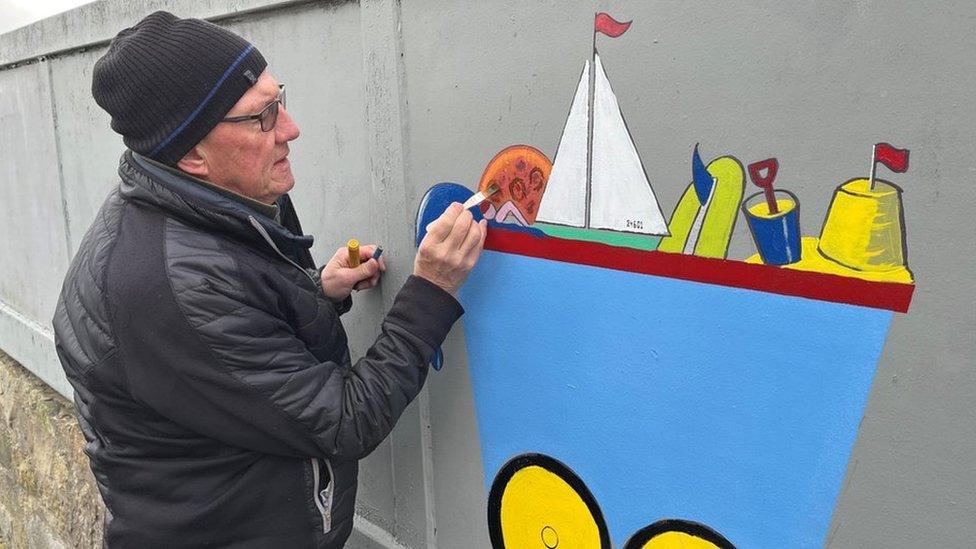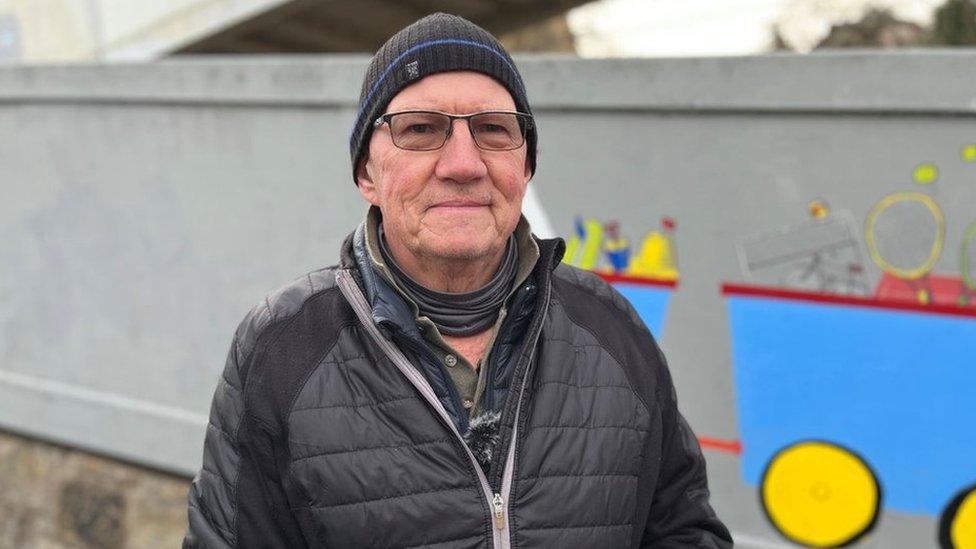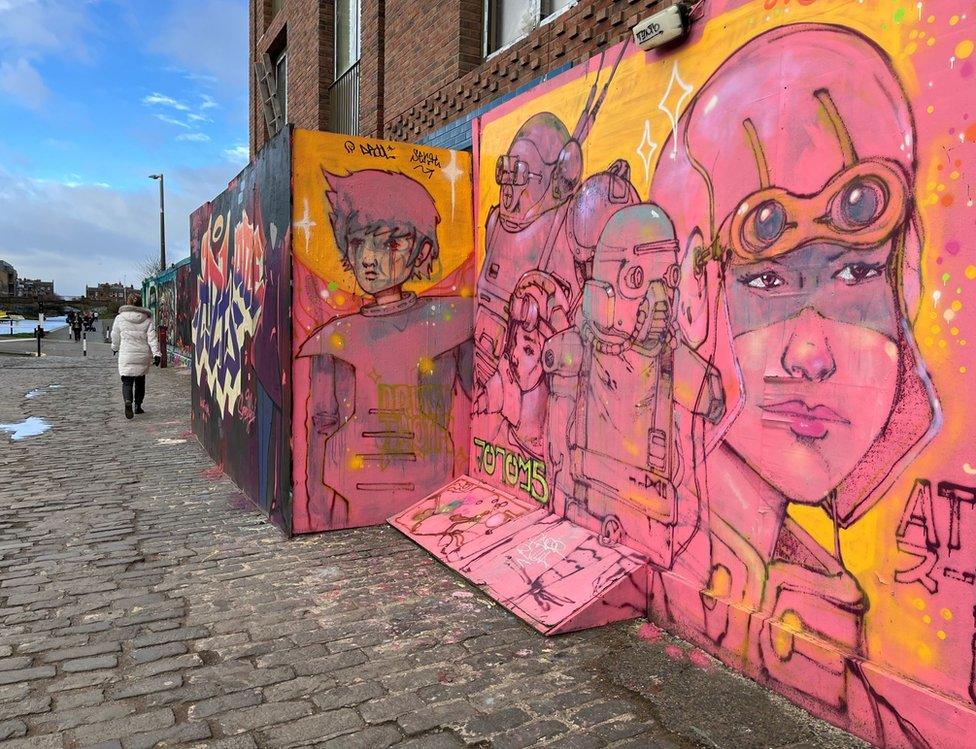The man tackling graffiti by creating murals
- Published

Retired teacher Chris Cowie painting a mural to cover graffiti tags in Edinburgh
When Chris Cowie complained to the council about graffiti in his neighbourhood he was told they didn't have the resources to tackle it. So he took his own pot of paint and headed for a nearby telecoms box.
"There was one quite offensive tag so I thought I'll paint over that," Chris says.
"I liked what I did so I thought 'right, I'll see what else I can do'."
Chris, a retired teacher who has lived in the Portobello area of Edinburgh for more than 50 years, says the council didn't object and, in fact, they gave him a pot of paint so it was more in keeping with their colour scheme.
He used the paint to cover graffiti tags "anywhere that needed it" - on communications boxes, telephone boxes and the local police box.
"It's a beautiful part of Edinburgh and I want to keep it that way," Chris says.
"It has always annoyed me that people try to defile the place, make a mess of all the walls and whatever. I just wanted to do something to make it look better."

Chris wants to keep his part of the city presentable and is painting over graffiti
What started six years ago as a "covering up" exercise has developed into something much more colourful.
These days Chris spends much of his spare time working on a railway bridge mural.
"Sadly over the years it has been graffitied, the vandals and the taggers have been out there." he says
"For a long time I just came along and greyed over the tags but I thought that was a bit boring.
"I just decided one day it would be good to do something a bit different. I thought it's beside a railway so why not put a train on it."
Inspired by ideas from children in the area, the mural has taken on a local theme.
The train carriages are filled with items that hold significance for the people of Portobello - surfboards, beach swimmers and dog walkers are all represented
"It's been very satisfying," Chris says.
"I pull up here with a car full of paint and every time I'm working people stop and say 'it's a great job you're doing'. It cheers people up"
Chris is offering a local solution to what the City of Edinburgh Council believes is wider issue - albeit a complex one.

Chris Cowie is currently working on a railway bridge mural
The local authority cites public concern as the reason for hosting a self-styled "graffiti summit" earlier this year involving police, business leaders, politicians and street artists.
Ross Blair - the creative director of the newly-created Edinburgh Mural Festival - says it was a "surprisingly useful" chance to share different perspectives.
"Obviously the council is looking to eradicate graffiti from the streets," he says.
"I think what they actually mean is they want to remove vandalism from the streets.
"On the whole, Edinburgh sees graffiti as a nuisance because it is if you wake up one morning and there's a tag on your door.
"What we're trying to separate is vandalism from art and I think they're two very different things and I think that gets confused often."
Mr Blair's own work was lifted in status a few years ago when a photograph of a mural he had created was given to US president Joe Biden by then prime minister Boris Johnson.
The image of Frederick Douglass, a former slave who became a leading figure in the abolitionist movement, is part of Edinburgh's BLM mural trail.

Ross Blair wants to separate graffiti from art
In Edinburgh, the city's Union Canal Basin has seen developers' hoardings transformed by a variety of murals.
The area has become an unofficial graffiti tolerance zone, something Ross argues is vital for young artists to develop their skills.
"If the developers decide to paint it out, it's their hoardings at the end of the day," he says.
"But if it's left you can see what can happen and the colour that it can bring to an area.
"We get approached when we're painting walls by parents and young people that are interested in graffiti and mural work but don't know how to get into it and also don't want to get into trouble doing it.
"Those young people can see the art form in a more involved way that's not necessarily just about snatching a tag on the end of a bus stop."

Councillor Cammy Day, the leader of Edinburgh Council, says the local authority is keen to introduce more tolerance zones around the city.
He also wants to extend the reach of its graffiti removal team by encouraging city centre businesses to sign up - for a price - to use the service.
"The problem is quite often on private buildings which the council doesn't have responsibility," he says.
"If there is racist or homophobic graffiti on any buildings we will clean that but we don't have any rights to access private property so that was part of that summit to say could we work with the private sector and extend the service.
"We're quite clear that the graffiti artists are part of the city and we want to celebrate that while we crack down on blatant vandalism on public property."
- Published11 June 2021
